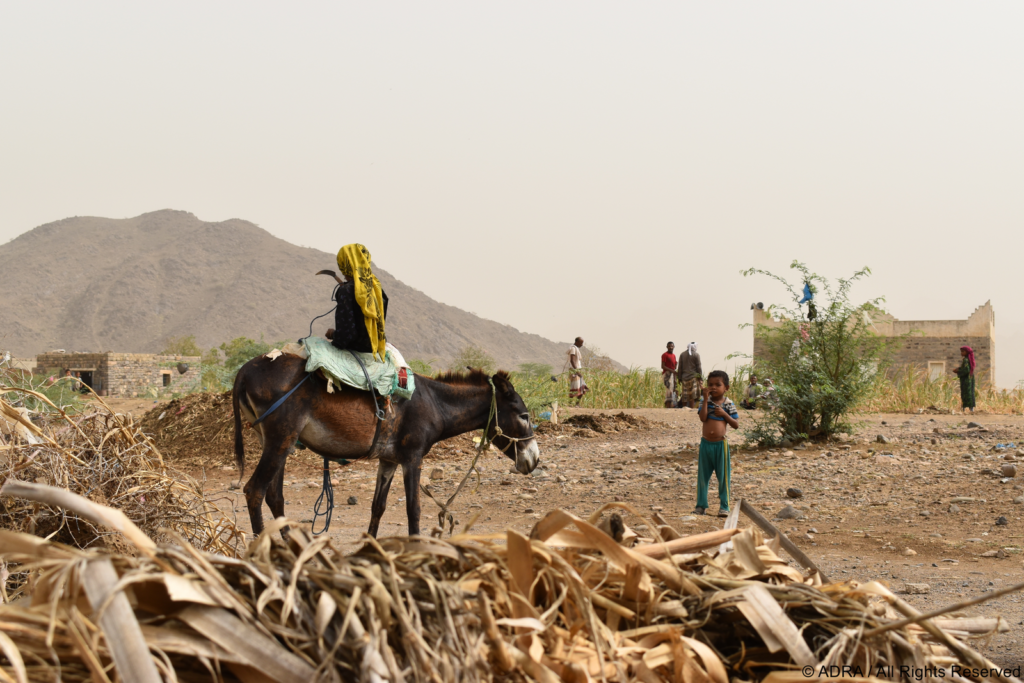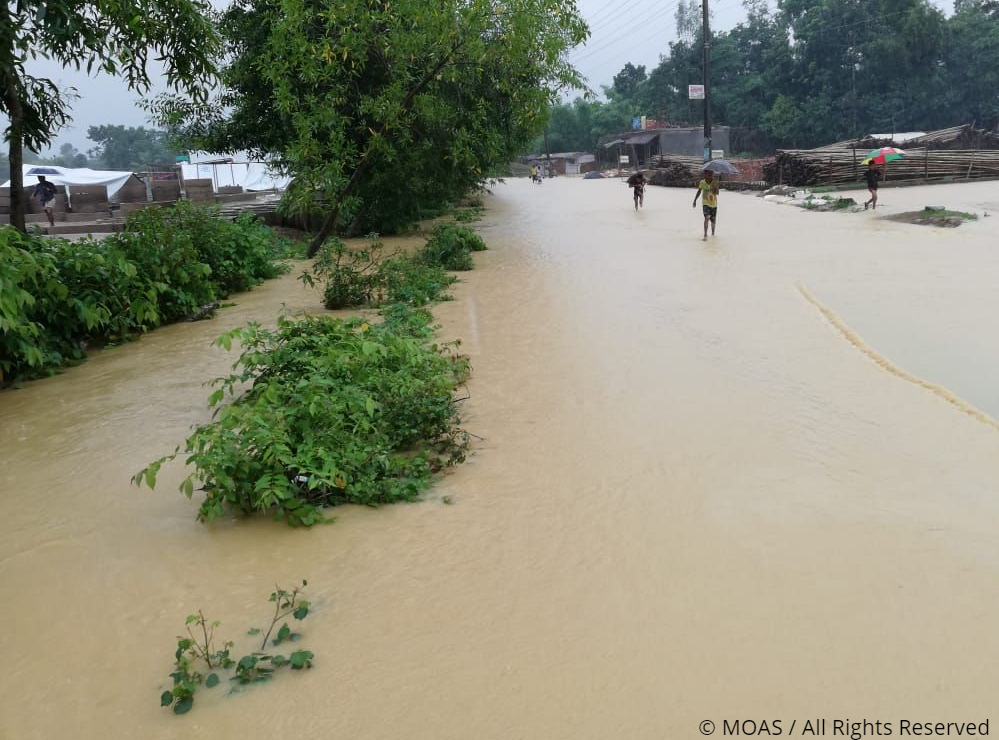2020 has been a year like no other. The COVID-19 pandemic was unexpected and hit every sector and community in the world. The pre-existing humanitarian challenges were only exacerbated by the restrictions and measures adopted by each country to try to mitigate the spread of the virus, which also caused millions of victims all over the world. The effects of the pandemic are likely to extend well into 2021, as Covid-19, along with existing challenges such as ongoing violent conflicts, rising hunger and the effects of climate change, will continue to have an impact throughout the year. As the health and non-health effects of COVID-19 merge with other shocks, UN officials warned that 2021 is shaping up to be a “humanitarian catastrophe”.
According to the UNOCHA Global Humanitarian Overview of 2021, during this year, 235 million people will need humanitarian assistance and protection. Last year the predictions were of 1 in 45 people in need, already the highest figure in decades. This year there was again a significant increase, with now 1 in 33 people worldwide needing help. The UN and partner organizations aim to help 160 million people most in need across 56 countries, which will require $35 billion.
Here is an overview of the challenges brought and exacerbated by COVID-19 and other emergent crises to keep an eye on during this 2021.
Economic decline
COVID-19 has triggered the deepest global recession since the 1930s. The global GDP has seen a contraction and for the first time in 22 years extreme poverty is on the rise. The total number of new people living in extreme poverty, especially in Southern Asia and sub-Saharan Africa, could be of between 110 million and 150 million, with the 88-115 million people who could fall back into extreme poverty due to COVID-19 and the additional increase of 23-35 million people at risk in 2021.
Unemployment has increased dramatically, as nearly 80 per cent of the 2 billion workers in the informal economy have been hurt by work-hour losses, with women and young people being hit the hardest.
Economic shocks demonstrate how all these threats are linked with each other, as conflicts, displacement or food insecurity can derive from economic collapses in which are not able to cope with crises like the one caused by COVID-19, such as in Venezuela, already ravaged by years of economic insecurity.
Political conflicts and displacement
Political conflicts are increasingly intense and highly violent, taking a heavy toll on civilians and disproportionately affecting children, with severe human rights violations becoming the norm, as can be seen in Yemen.
Attacks against aid and health workers persist, making humanitarian access and operations increasingly difficult. Long, protracted conflict situations bring the largest increases in humanitarian needs because of their high volatility and rapid deterioration. The number of people in need in countries like Afghanistan and the DRC continues rising even after decades of conflict, with many of these states also at risk of an even more violent year in 2021.
The consequences of armed conflicts can spread across borders. Examples like the Lake Chad Basin (across the borders of Nigeria, Niger, Chad and Cameroon) and the central Sahel demonstrate how conflicts can easily destabilise entire regions. Emerging conflicts in Mozambique and the Tigray region of Ethiopia are already starting to spill over to neighboring states, causing high numbers of displacements, another of the challenges to watch in 2021.
The last decade saw the highest-ever number of people internally displaced by conflict and violence, with many living in situations of protracted displacement. There are an estimated 51 million new and existing IDPs, and the number of refugees from just the five most volatile countries, Afghanistan, Myanmar, South Sudan, Syria and Venezuela, has doubled to 20 million. Displacement is not only caused by conflicts, as natural disasters have been the reason for most displacements within these last years, especially in the Asian region. The increasing number of IDPs represent a very vulnerable group to take into account in 2021.
Hunger
Mainly as a result of increasing conflicts, hunger is rising globally. There is the risk that the number of acutely food insecure people will increase to 270 million due to COVID-19, an 82% increase compared to the number of acutely food insecure people pre-COVID-19. The pandemic and climate change seriously affected food systems worldwide. Food security needs are set to increase dramatically in 2021, as entire food supply chains have been disrupted.
In all the countries of the IRC Watchlist 2021, hunger and food insecurity represent an alarming threat, arising mostly as a consequence of conflicts. Countries like Yemen, Afghanistan have entire populations at increasing risks of malnutrition. Areas already on the brink of starvation will need urgent and sustained humanitarian action to avoid further deterioration and to prevent a risk of famine.
Climate change
Climate change within the last years has become a recurring challenge for the world and humanitarian response efforts. The last 10 years were the hottest on record, and its effects become more and more evident and devastating: millions of people are displaced every year because of natural disasters caused by the rise of global temperatures and increasing events of flooding in countries such as Bangladesh, Sudan and many more. Increasingly severe weather and rising numbers of natural disasters also exacerbate chronic vulnerabilities.
It is expected that the first quarter of 2021 will be affected by additional climatic changes from La Niña, impacting sea temperatures, rainfall patterns and hurricane activity. The consequent floods and droughts that could result from this periodic natural weather phenomenon will affect agriculture, livelihoods and food security.
The triple threat of conflict, climate change and COVID-19 could lead to devastating effects and humanitarian catastrophe in many countries like South Sudan or Ethiopia, where conflict and Covid-19 are combined with frequent locust swarms or flooding.
Disease outbreaks
With the disruption of health systems in many countries, due to the outbreak of COVID-19, essential health services have been hindered and countries became incapable of coping with other diseases. As a result, disease outbreaks are now increasing. More than 5 million children under 5 years of age face the threats of cholera and acute watery diarrhea in Yemen. Years of progress in diseases such as HIV, tuberculosis and malaria, could be severely affected and annual death tolls doubled.
The pandemic and measures to contain it also revealed mental health and psychosocial consequences in all countries, particularly in humanitarian settings where resources for mental health and psychosocial support are either scarce or non-existent. This issue will certainly be another challenge to tackle in 2021.
Final thoughts
2020 was a year that brought a great number of difficulties that the world was unprepared to face. The responses put into action to contain the pandemic will need to be adequately implemented in 2021, to make sure that the humanitarian response to Covid-19 and beyond can be effective and able to address the needs of everyone. When trying to anticipate the crises of 2020, it was difficult to predict that by the end of the year the world would have been in such a fragile situation. Adjusting humanitarian programming to treat crises in a more integrated manner, being that the crises themselves are interlinked, is therefore crucial also to make sure that gaps and weaknesses can be overcome. Boosting humanitarian action will continue to be vital to be prepared to face new crises, with policy changes essential to also bolster the work of non-profits.
If you are interested in the work of MOAS and our partners, please follow us on social media, sign up to our newsletter and share our content. You can also reach out to us any time via [email protected]. If you want to support our operations, please give what you can at www.moas.eu/donate.



